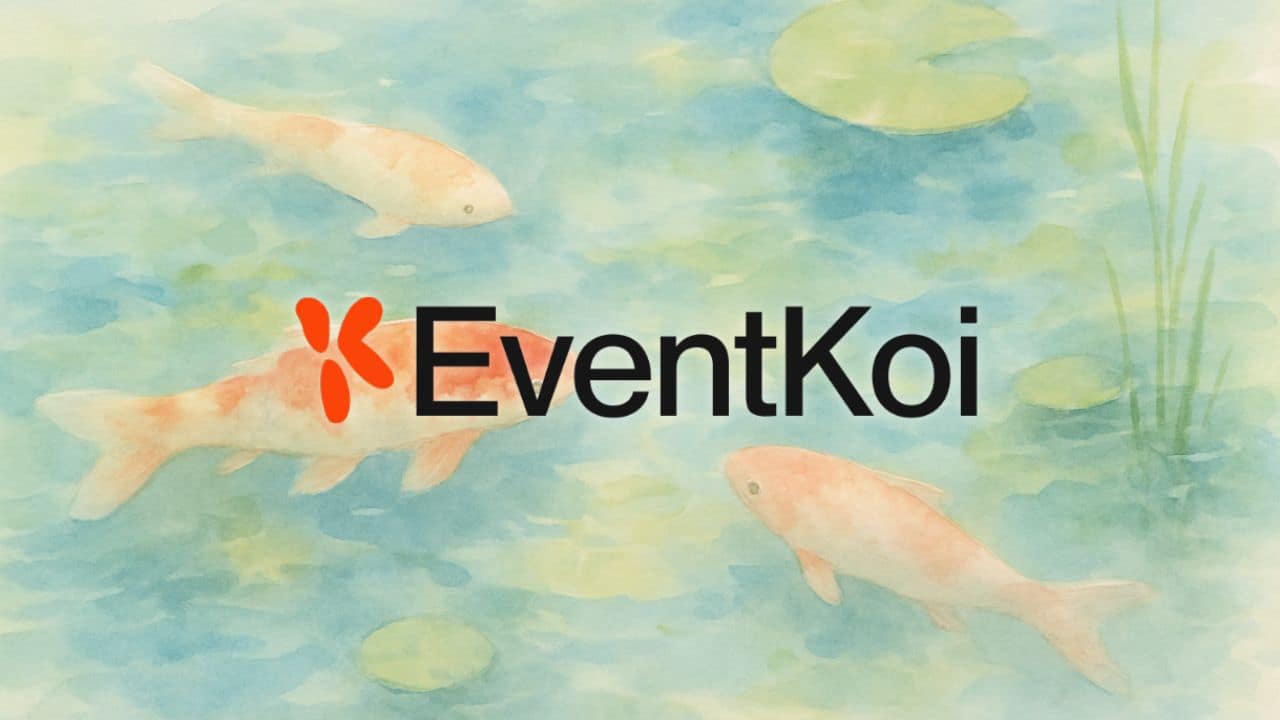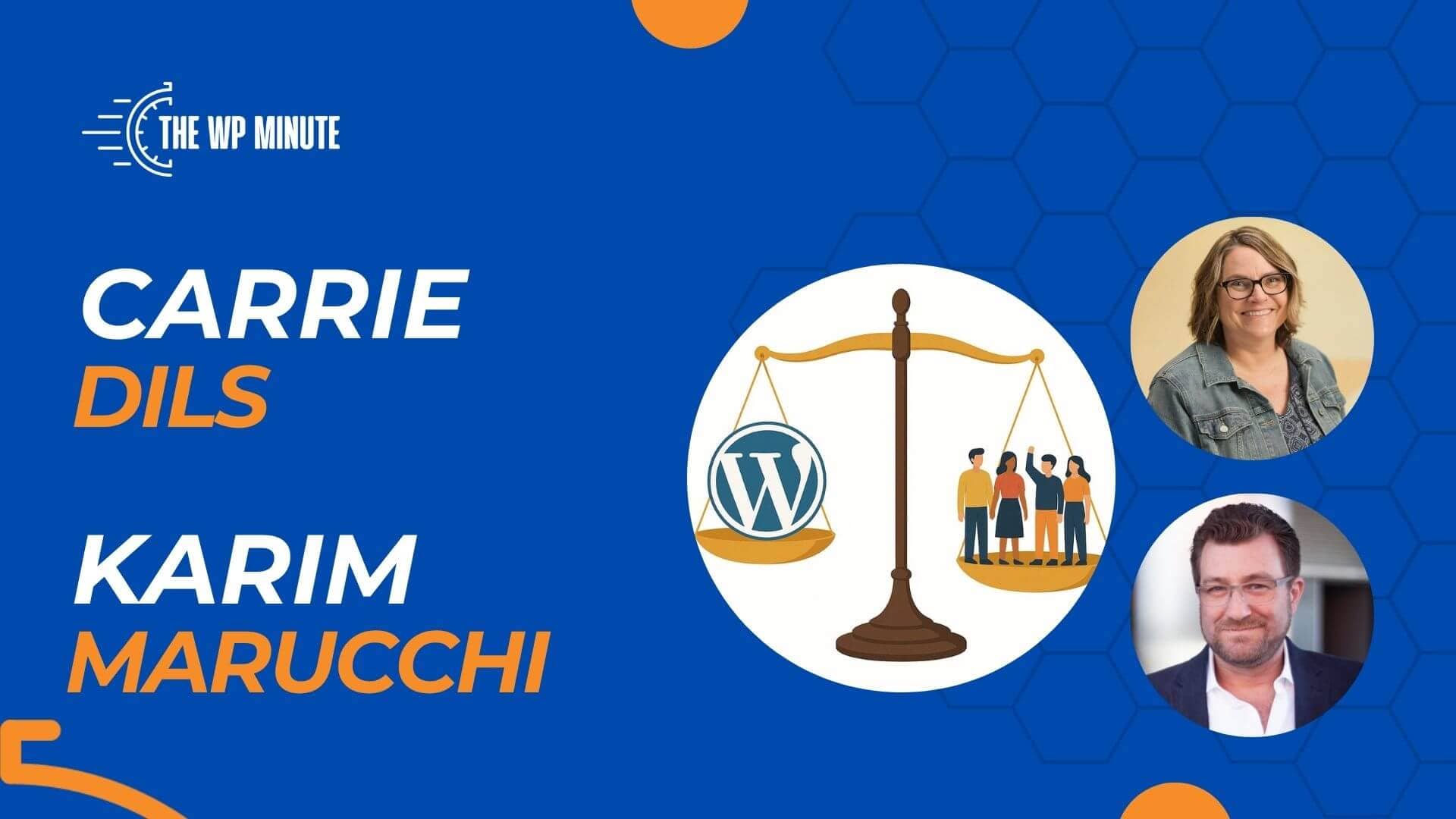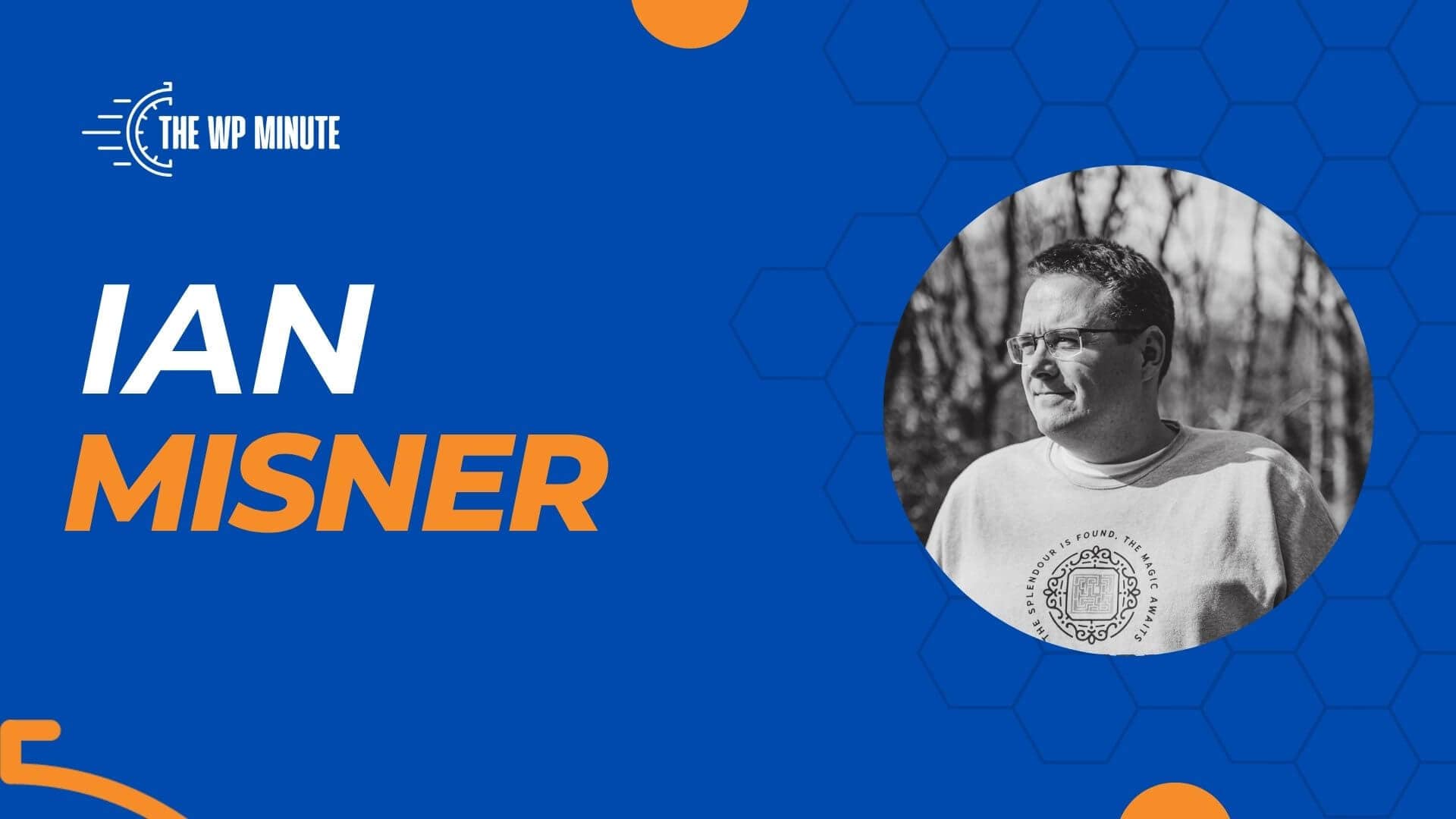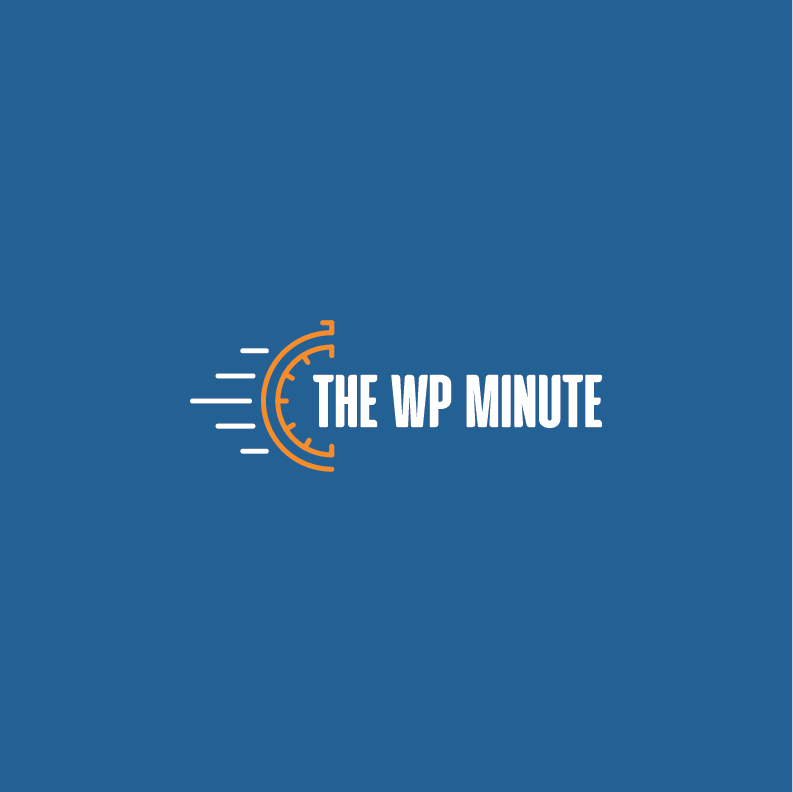After successfully building and selling Newsletter Glue, most founders might have taken a moment to pause. But for Lesley Sim, the transition was less about slowing down and more about leveling up. Even before Newsletter Glue was acquired, she had already started work on her next venture: EventKoi, a fresh approach to event management in WordPress.
Armed with the trust and reputation earned from her first product, she decided it was time to move from a niche plugin with little competition to a mature, crowded market ready for disruption. In this interview, we explore what inspired her to launch EventKoi, how the experience of building it differs from her earlier work, and the key lessons that continue to shape her approach to entrepreneurship.
What inspired you to launch EventKoi after successfully selling Newsletter Glue?
We started building EventKoi before we sold Newsletter Glue. The original plan was to run them both together. However, we quickly found juggling both was too difficult and decided to sell Newsletter Glue.
We chose to build an events plugin after Newsletter Glue based on our experience with our first plugin.
Newsletter Glue was a niche plugin – we were the only plugin that did what we did (the way we did it) for a specific market. This was great back then when we were unknown in the WordPress community and needed a product that didn’t have many competitors so potential customers would be forced to take a chance on us.
Now, with the success of Newsletter Glue, we have a lot of trust from the community. So we knew we wanted to leverage that trust and build our next product in a large mature category that was ripe for disruption.
After doing our research, we settled on Events.
We felt confident we could bring a fresh perspective to events in WordPress and do an excellent job.
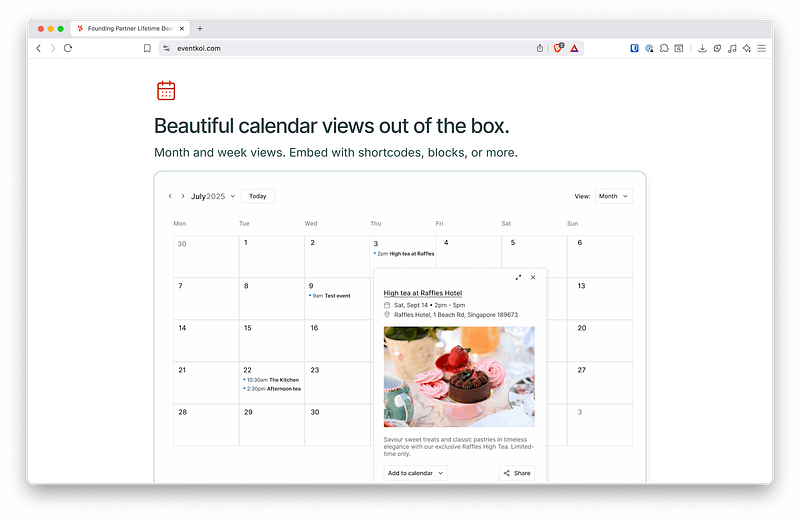
Does launching EventKoi “feel” different to you than when you started NG?
Ahmed and I feel like we are completely different people with significantly more experience, knowledge and connections. Also, AI has been an incredibly knowledgeable sidekick for both of us. Just yesterday, I shared a gnarly technical support ticket with chatGPT and got a decent answer. In the past, I would have had to rely on Ahmed, my co-founder, for those tickets.
When we first started NG, I didn’t know most things about running a software business. For example, I didn’t know how to design a product. So I would be reading books on design, while also designing the plugin. Now, I can simply design. The same applies to many other aspects of the business.
What key business lessons from Newsletter Glue shaped your approach to developing and marketing EventKoi?
As I mentioned in the first question, with Newsletter Glue, we took a big fish in a small pond approach. That was necessary at the time as we were unknown in the WordPress world and were unable to gain any traction in established plugin markets. For context, before Newsletter Glue, we tried launching a membership plugin, but were unable to make any headway. Just think about it – why would you try a brand new membership plugin from unknown (and potentially untrustworthy) people when it has less features and is more buggy than your existing plugins. And even if you were on the market for something new, you would probably first try one of the other established membership plugins. There was truly very little reason to try us.
This led us to building Newsletter Glue instead. A plugin that tackled such a niche problem that you were practically obliged to give us a try because we were the only solution on the market.
With EventKoi, we now have the reputation that we didn’t have when first starting out with Newsletter Glue. This enables us to try being a small fish in a big pond. It’s still an uphill battle convincing people to try us when there are many established plugins out there with many more features than us. But I believe that Ahmed and I are now a formidable duo when it comes to building beautiful, thoughtful and technically-solid plugins, and that’s a large part of the reason many people are interested in EventKoi.
I must say, it’s been a completely different experience going from a small pond (where I constantly have to explain to people what Newsletter Glue is and find the small group of people who need it) to a big pond (where I can just say “it’s an events plugin” and everyone gets it instantly).
How has the WordPress ecosystem evolved since Newsletter Glue, making it easier or harder to launch new plugins?
The landscape is completely different from 5 years ago. In 2020, everyone was online and energetic. Now, the world is less online. There is also a subtle but pervasive sense of burn out everywhere. Not to mention the drama that occurred last year made me seriously consider if I wanted to build another WordPress product.
At the same time, all of those things haven’t significantly impacted how easy or difficult it is to launch. I’d just say the vibe is a little different now.
In what ways has WordPress’s shift to blocks and full-site editing positively impacted (or challenged) plugin development?
It has just meant that we now need to build compatibility with two things: Classic WordPress with stuff like shortcodes and the Gutenberg-era with blocks, templates and patterns. It’s just more to learn, build and maintain.
How did you decide on EventKoi’s pricing strategy, including starting with a lifetime deal?
Simultaneously with great difficulty and great ease.
Picking a price when you’re new and don’t know who your ideal customers are, and how you want to position yourself means that any price you pick is going to be wrong and will have to be updated at some point. The only thing you can do is be “in the ballpark of correct”. The simplest way to be in the ballpark is by looking at your competitors, then pricing a bit lower than them to account for the fact that you’re a new product.
The lifetime deal was actually a solution to a chicken and egg problem we had.
That is, we can’t build what customers want and debug the plugin if we didn’t have customers. But we can’t have customers if we don’t build what they want and debug the plugin.
The lifetime deal is a great solution because customers are willing to trade the fact that our plugin is not as mature as some of our competitors, with the super cheap, one-off promotion.
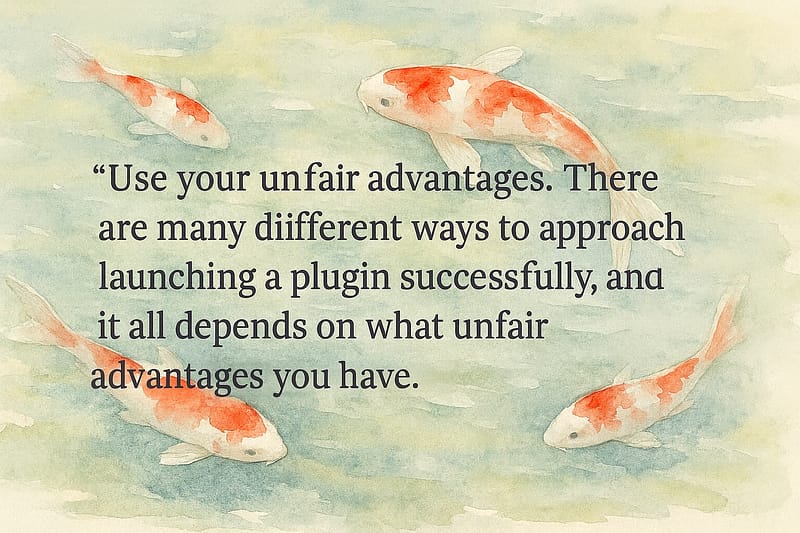
What advice do you have for WordPress entrepreneurs on launching a plugin business in today’s market?
Use your unfair advantages. There are many many different ways to approach launching a plugin successfully, and it all depends on what unfair advantages you have.
If you’re a technical god, then you could look for a category that suffers from poorly built plugins that are mission critical, and build there. That would be a huge advantage.
If you have an abundance of cheap labour, you could consider launching many different plugins to see which ones take off, then putting more resources into those.
If you’re amazing at marketing, you could launch in a category that might be less technical, with many many copycat plugins, and figure out how to make yours standout.
And of course, if you’re great at multiple things, then make sure you’re applying all of your unfair advantages!
Make sure you have a path to a viable business. You don’t have to be successful from day 1, but if you don’t have a clear path to, let’s say at a minimum USD10k/month within 1-2 years, you should look for another path. It is totally fine to abandon a path completely the moment you realise it cannot lead to a viable business. Don’t hold on to projects that will be a drag on your journey to a viable business.
There are many people who will tell you that you should just build and launch free plugins for the fun of it, or to contribute back to the project. That’s all well and good, but you’ll also notice that many of those people are either: a. Multi-millionaires already or b. Struggling to make ends meet.
Don’t listen to them. Be doggedly focused on doing things that make money, until money is no longer a problem. Then you can shift focus to freeing up time to do things like contribute for free to the WordPress project.
Be clear about the problem you have and the tool you use to solve it. Sometimes people like to use tools because they look cool or they see someone else using them. Lifetime deals are a good example of this. Walking around with a tool and looking for a problem to apply it to is a surefire path to failure. Here are a couple of other examples of tools that people often use when they don’t have a problem or they apply it to the wrong problem:
- Affiliate programs
- SEO
- Good design
- Pricing
- Building in public
- Promotions
- Programming languages
- Design systems
In every instance, the correct tool is:
- The one that’s easiest for you to get using the least resources possible.
- The one that lets you solve the problem quickest.
- The one that solves the problem, no more, no less.
- The one that causes the fewest problems in the future – This is an advanced criteria that should only be used in a tie breaker when you have multiple tools that pass the first 3 criteria. If you have a first tool that clearly passes the first 3 but fails the fourth. And a second tool that fails the first 3, but passes the fourth – pick the first tool.
Make friends with as many WordPress business owners as possible. This pays dividends no matter what. Don’t focus on trying to do partnerships or anything like that, at the start you really don’t have much to offer them. Just be genuine and make friends. And share what you’re working on. The opportunities will present themselves later on.
Looking ahead, how do you see WordPress development trends influencing future plugin opportunities?
I actually think plugin opportunities will stay relatively the same because there are a few categories that are never going anywhere:
- E-commerce
- Membership management
- E-learning
- Publishing
- Marketing
- Design
- Events – of course!
- Amongst many others
So, as long as you build a product that fits in one of those categories, you’ll be able to build a viable business. Certain features might shift with the trends, but those become minor features over time as your plugin becomes more mature.
For example, take a category I know very well – email. Someone might try to launch an email plugin that differentiates itself by using AI to design and write the emails. But ultimately, they’ll still have to build all the “boring” things that established email plugins already have – high quality email html, email templates, deliverability systems, and lists.
Perhaps you could argue that one could build a very niche add-on to WooCommerce that could be entirely trendy. However, if the trend fails, then the product will fail. And if the trend becomes a normal part of life, then that feature is likely to become yet another feature for bigger plugins. Again, AI is a good example of this.
What’s next for EventKoi? After the LTD sale campaign, how do you plan to approach developing new features and building out longer term marketing?
A big goal of the LTD sale is to get opinionated customers who tell us what they need from us. So far, we’ve gotten lots of feedback, which is great. This really helps us prioritise what we should build.
Up next for marketing, I want to start approaching bloggers and youtubers to do reviews of the plugin. And also work with customers to create case studies. I’ll also keep posting on Twitter. I’d love to get word of mouth going simply by building a great product that people are excited to talk about.
In the longer term, we will build integrations with existing plugins and do cross-marketing with them.
Join The Newsletter
Get your favorite 5 minutes of WordPress news for busy professionals every week — 100% Free! Join the WP Minute Newsletter below 👇
